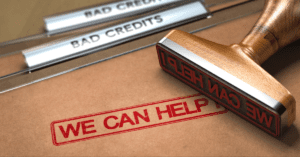Introduction: Finding Light at the End of the Debt Tunnel
Feeling overwhelmed by debt can be like wandering in a dark tunnel, not knowing where the light is. But guess what? There’s not just light at the end of this tunnel — there’s a whole new day waiting for you. As a licensed insolvency trustee, I’ve guided many through this journey. In this article, we’ll explore how understanding and navigating bankruptcy and insolvency can be your first steps towards financial freedom. Stick with me, and let’s turn that financial burden into a fresh start!
Understanding Debt in Ontario
The Landscape of Financial Challenges
In Ontario, the story is all too common — rising living costs, tempting credit offers, and the ever-looming shadow of debt. It’s not just you; many Ontarians are in the same boat. In the last few years, we’ve seen an uptick in consumer debt, fueled by factors like high housing costs and easy access to credit. Let’s take a closer look at these trends, and find some insights into how they affect individual financial health and what it means for you.
The Basics of Bankruptcy and Insolvency
Decoding the Financial Jargon
Bankruptcy and insolvency — they’re not just legal terms, they’re also lifelines. But what do they really mean for you? In simple terms, bankruptcy is a legal process where you declare yourself unable to pay back your debts, and in turn, you get relief from these debts under the protection of the law. Insolvency, on the other hand, is the financial state where your debts exceed your assets, and you’re unable to meet your debt obligations when they’re due. Understanding these options is crucial, as they can offer a path to reset your financial situation.
The Bankruptcy and Insolvency Act: A Lifeline for Canadians
Your Legal Shield Against Debt
Canada’s Bankruptcy and Insolvency Act (BIA) is more than legislation; it’s a framework designed to give you a fighting chance against debt. The BIA governs how bankruptcies and insolvencies are handled in Canada, ensuring fairness for both debtors and creditors. This act allows for various debt relief mechanisms, including consumer proposals and bankruptcy filings. We’ll explore how this act can protect you and provide a structured path to manage and clear your debts.
Warning Signs of Financial Distress
Recognizing the Red Flags
Ignoring debt is like ignoring a leaky faucet — it only gets worse over time. Warning signs include struggling to make minimum payments, using credit to cover basic living expenses, and experiencing constant stress about money. Let’s talk about recognizing these signs early toempower you to take control before it’s too late. It’s all about proactive management and seeking help when needed.
Debt Relief Options in Ontario
Finding Your Path to Debt Freedom
There’s no one-size-fits-all solution to debt, but there are several paths you can take. Debt consolidation, for instance, involves combining all your debts into one loan with a lower interest rate, making it easier to manage payments. Consumer proposals, another popular option, allow you to negotiate with your creditors to pay back a portion of your debt over a specific period. We’ll explore these options and more, helping you find the best fit for your situation.
The Process of Filing for Bankruptcy
Your Step-by-Step Guide
Filing for bankruptcy might seem daunting, but it’s a structured and clear process. First, you’ll need to consult with a licensed insolvency trustee who will evaluate your financial situation and discuss your options. If bankruptcy is the best route, you’ll file the necessary paperwork and begin the process of discharging your debts. This section will guide you through each step, explaining what to expect and how to navigate the process effectively.
Alternatives to Bankruptcy
Exploring Other Avenues
Bankruptcy isn’t your only option. Consumer proposals, for example, are a great alternative for those who can pay back a portion of their debt. This process involves negotiating with creditors to agree on a reduced debt amount and a payment schedule, usually over a period of up to five years. We’ll compare these options and others, like debt settlement and negotiation, to give you a comprehensive view of the alternatives available.
Managing Finances Post-Debt Relief
Building a Stronger Financial Future
Emerging from debt is an achievement, but maintaining financial health is an ongoing journey. This section focuses on strategies for budgeting, saving, and avoiding future debt. We’ll discuss the importance of creating a budget, understanding your spending habits, and setting realistic financial goals. It’s all about building habits that ensure long-term financial health and stability.
Legal and Emotional Support for Debtors
You’re Not Alone
Dealing with debt is as much an emotional challenge as a financial one. This final section addresses the importance of legal and emotional support during this journey. We’ll highlight resources like financial counseling, support groups, and community programs available in Ontario. Remember, seeking help is a sign of strength.
Conclusion: Embrace Your Financial Fresh Start
Remember, facing financial challenges isn’t the end of the story — it’s the beginning of a new chapter. With the right knowledge and support, you can turn these challenges into opportunities for growth and stability. Don’t hesitate to reach out for professional guidance; your path to financial freedom is just a conversation away.
Call to Action: Take the First Step Today
Ready to take control of your financial future? Contact us for a personalized consultation. Let’s work together to find the best solution for your unique situation. The first step is always the hardest, but it’s also the most rewarding. Let’s take it together!




